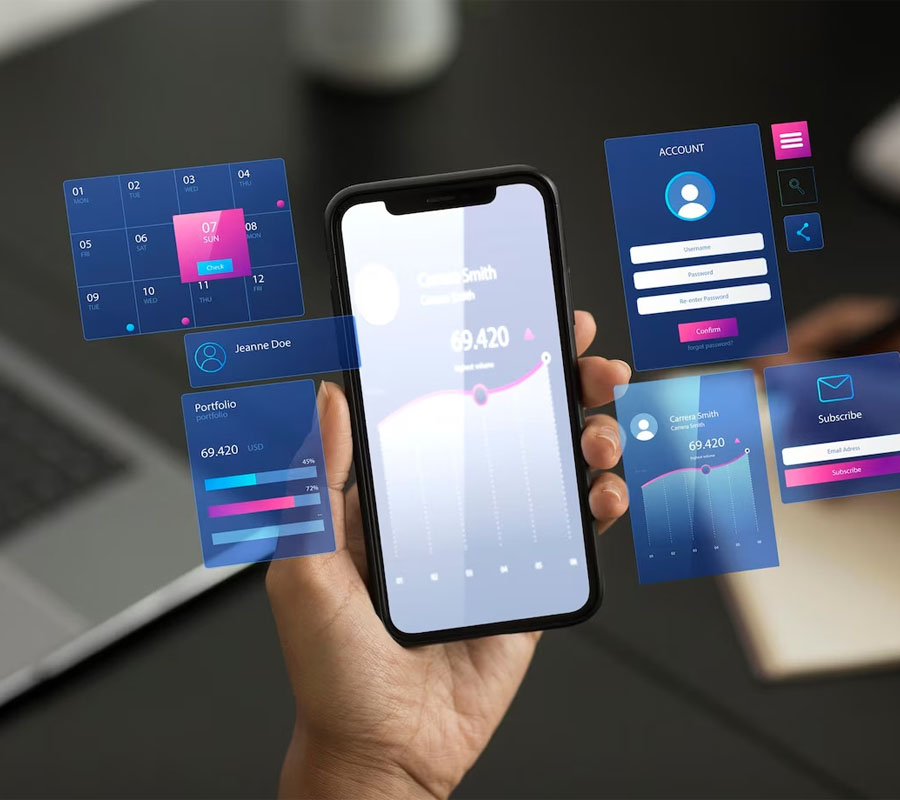
Introduction: In today’s digital age, the demand for mobile applications continues to soar as businesses and individuals alike recognize the immense value they bring. Whether it’s enhancing user experiences, streamlining operations, or unlocking new revenue streams, mobile apps have become indispensable tools for success. However, diving into the world of app development can be daunting, especially for beginners. In this guide, we’ll take you through the essential steps and considerations involved in app development, empowering you to navigate this exciting journey with confidence.
Understanding the Basics of App Development: Before embarking on your app development journey, it’s crucial to grasp the fundamentals of the process. At its core, app development involves designing, building, testing, and deploying software applications tailored to run on mobile devices such as smartphones and tablets. These applications can range from simple utilities and games to complex enterprise solutions, each requiring a unique approach to development.
Choosing the Right Development Approach: One of the first decisions you’ll face as an aspiring app developer is selecting the most suitable development approach. Generally, you have three primary options to consider:
Native App Development: Native apps are built using platform-specific programming languages and development tools, such as Swift or Objective-C for iOS and Java or Kotlin for Android. While native development offers superior performance and access to device-specific features, it requires separate codebases for each platform, potentially increasing development time and cost.
Cross-Platform Development: Cross-platform frameworks like React Native, Xamarin, and Flutter enable developers to write code once and deploy it across multiple platforms. While this approach offers greater code reusability and faster development cycles, it may sacrifice some performance optimizations and platform-specific functionalities.
Hybrid App Development: Hybrid apps combine web technologies (HTML, CSS, JavaScript) with native components, allowing developers to create apps that run within a native container. Frameworks like Ionic and Apache Cordova facilitate hybrid app development, offering a balance between development speed and performance.
Regardless of the approach you choose, it’s essential to consider factors such as project requirements, target audience, budget constraints, and long-term maintenance considerations.
Defining Your App’s Purpose and Features: Once you’ve determined your development approach, it’s time to define your app’s purpose and features. Start by conducting market research to identify user needs, preferences, and pain points within your target niche. Based on your findings, outline the core functionalities and features that will address these needs and differentiate your app from competitors. Consider creating user personas and storyboards to visualize the user journey and prioritize features based on their impact and feasibility.
Designing an Intuitive User Interface (UI) and User Experience (UX): A well-designed user interface (UI) and user experience (UX) are critical to the success of any mobile application. Invest time in creating wireframes and prototypes to visualize your app’s layout, navigation flow, and interactions. Pay attention to factors such as simplicity, consistency, accessibility, and responsiveness to ensure a seamless and intuitive user experience. Solicit feedback from beta testers and iterate on your designs to refine and optimize the user interface before proceeding to development.
Developing and Testing Your App: With your app’s design finalized, it’s time to roll up your sleeves and start coding. Break down your app’s development into manageable sprints or milestones, focusing on implementing one feature at a time. Leverage integrated development environments (IDEs) and development tools specific to your chosen platform or framework to streamline the coding process. Throughout development, adopt best practices such as version control, code reviews, and automated testing to maintain code quality and minimize bugs.
Once your app reaches a stable state, conduct rigorous testing across various devices, operating systems, and usage scenarios to identify and address any bugs or performance issues. Consider employing both manual testing and automated testing tools to ensure comprehensive test coverage and validate your app’s functionality, usability, and performance.

